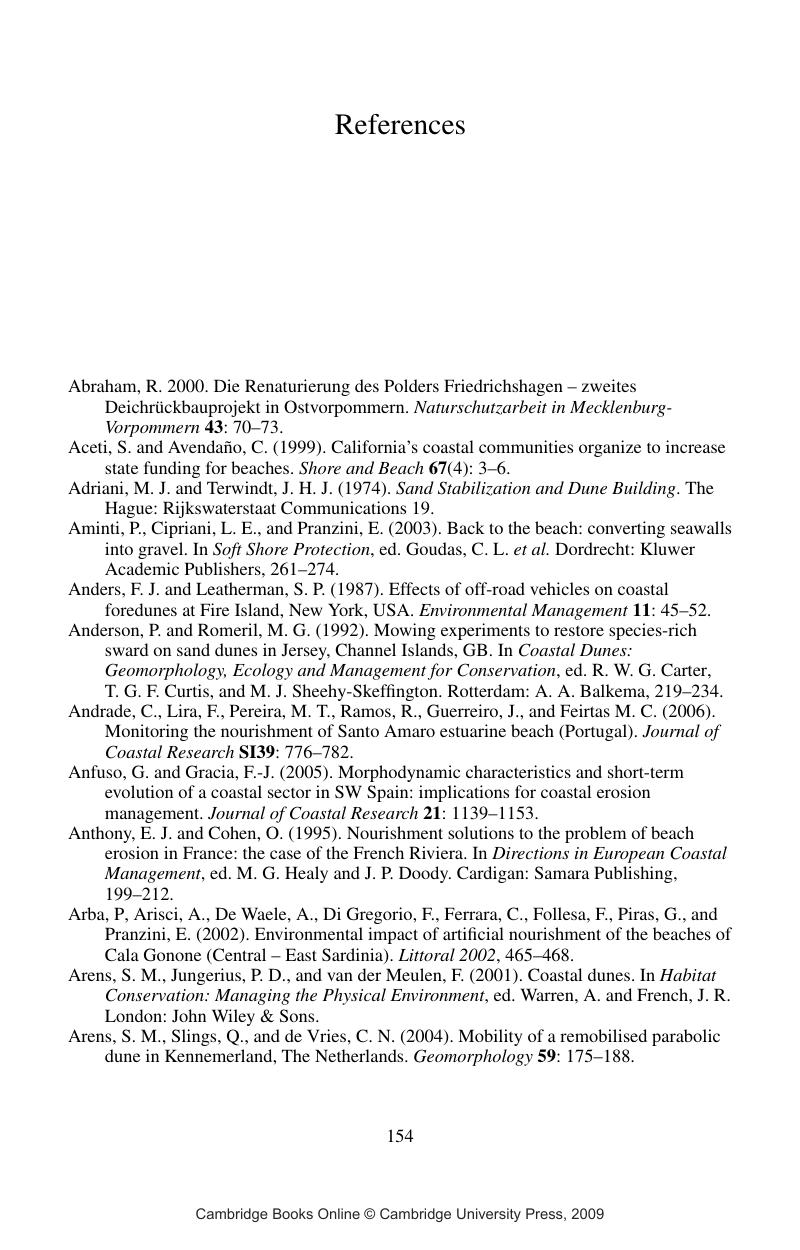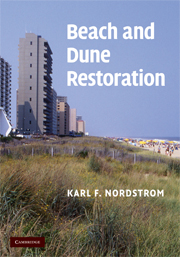Book contents
- Frontmatter
- Contents
- Preface
- Acknowledgments
- 1 The need for restoration
- 2 Beach nourishment and impacts
- 3 Dune building practices and impacts
- 4 Restoring processes, structure, and functions
- 5 Options in spatially restricted environments
- 6 A locally based program for beach and dune restoration
- 7 Stakeholder interests, conflicts, and co-operation
- 8 Research needs
- References
- Index
- References
References
Published online by Cambridge University Press: 14 August 2009
- Frontmatter
- Contents
- Preface
- Acknowledgments
- 1 The need for restoration
- 2 Beach nourishment and impacts
- 3 Dune building practices and impacts
- 4 Restoring processes, structure, and functions
- 5 Options in spatially restricted environments
- 6 A locally based program for beach and dune restoration
- 7 Stakeholder interests, conflicts, and co-operation
- 8 Research needs
- References
- Index
- References
Summary

- Type
- Chapter
- Information
- Beach and Dune Restoration , pp. 154 - 183Publisher: Cambridge University PressPrint publication year: 2008



